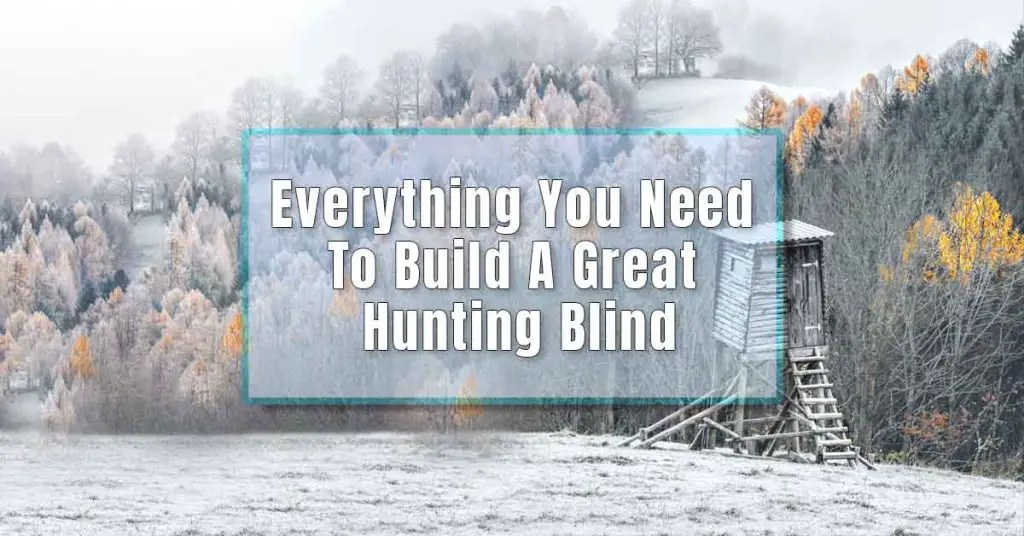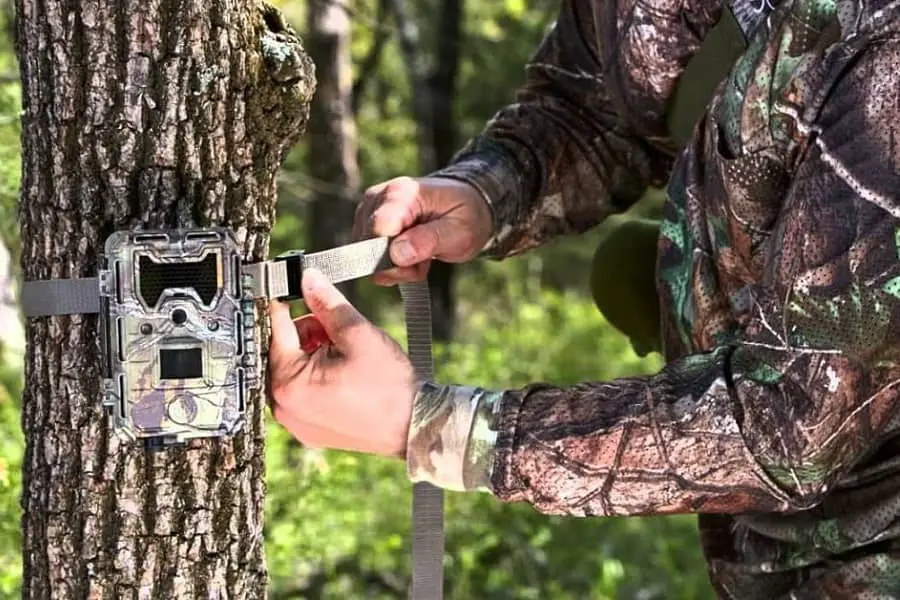With some hunting blinds reaching hundreds of dollars, you might want to get crafty and build your own blind.
However, this will require a lot of equipment, which is intended for people who already know what they’re getting into when you build a hunting hide.
First, we’ll list everything you need to start building the perfect hide, and we’ll detail the various steps to build your own hunting blind with a few handy tips along the way.
The Materials Needed For Your Hide:
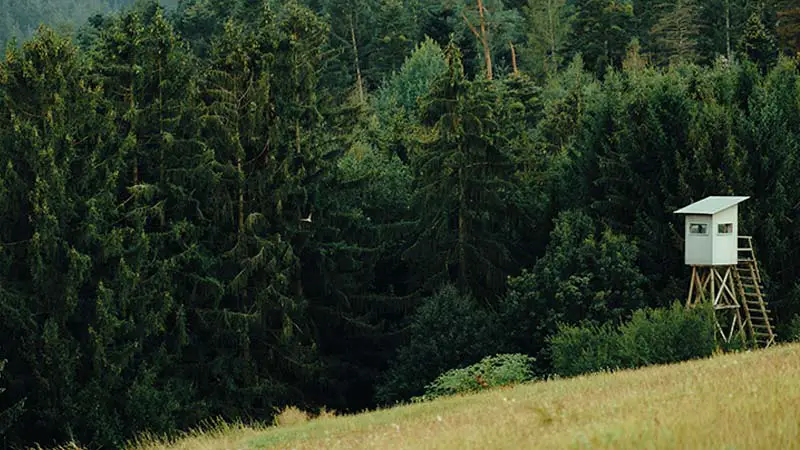
Here is a list of the materials needed to build your own hunting hide:
- 2×4 planks
- 2×6 planks
- 4×4 posts
- Four elevation brackets
- Screws
- Nails
- Fence poles
- Key hooks
- Straps
- Car hauler
- Plexiglass
- Barrel latch
- Magnets
- Wooden floor planks
- Bolts
- Shingles
- Door hinges
- Doorknob
- Key lock
- Ladder
- Window hinges
- 2 gallons of paint
- Pocket hole jig
- Cordless screwdriver
- Drill
Creating The Floor Of Your DIY Hunting Hide
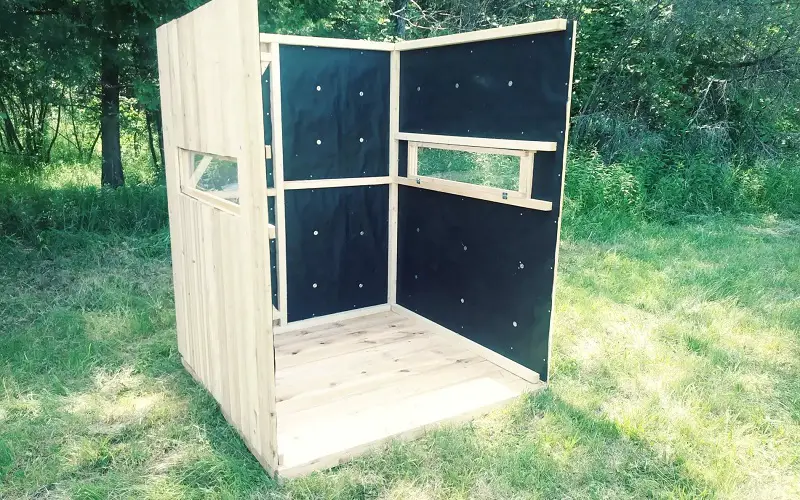
The first thing you’ll want to do is create the floor for your DIY hunting blind. For this part, we’ll detail how you can build a simple 6×5 hide, so if you want to build it more prominent, adjust the materials accordingly.
Make a square with four 2×6 planks (you want to treat the wood before to make it last longer) and add two similar planks in the middle to consolidate the structure; screw them using your cordless screwdriver with three screws on each end. You can then nail your wooden floor on top of the base.
Elevating Your DIY Deer Hide
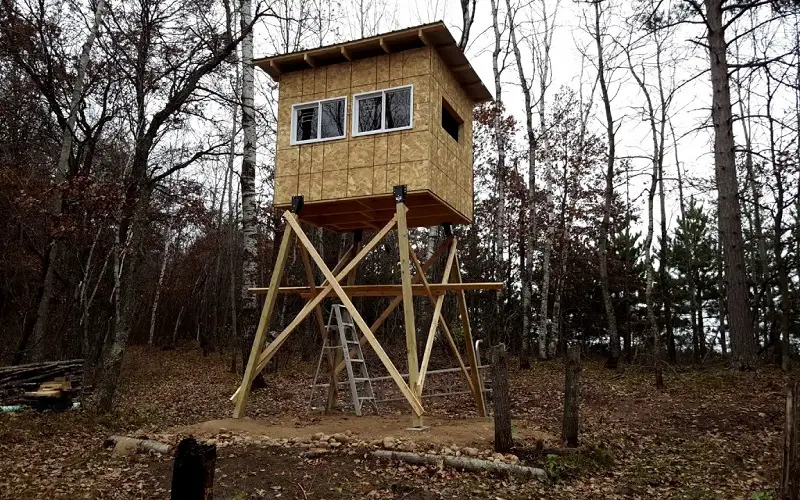
When you build a hunting hide, you want to elevate it to get the best visibility; we recommend aiming for a ten-foot elevation to have a nice angle in the tree line. For this, you’ll need elevator brackets.
Some of these are sold without hardware, so you may need to buy additional screws or bolts. Pre-drill the holes on the four corners of your base before bolting the brackets, as the corners are thicker and it can damage your screwdriver. You’ll also need 4×4 posts to slide and screw inside the brackets.
Moreover, to keep the structure steady, you’re going to need 12 feet long 2×4 planks; making an “X” on each side and a small woodblock at the center will help these planks support your overall structure.
Later on, this structure will need to be anchored to the ground; we recommend burying the four poles and adding a fence pole screwed to the bottom part of the four legs of your hide.
Create The Cabin
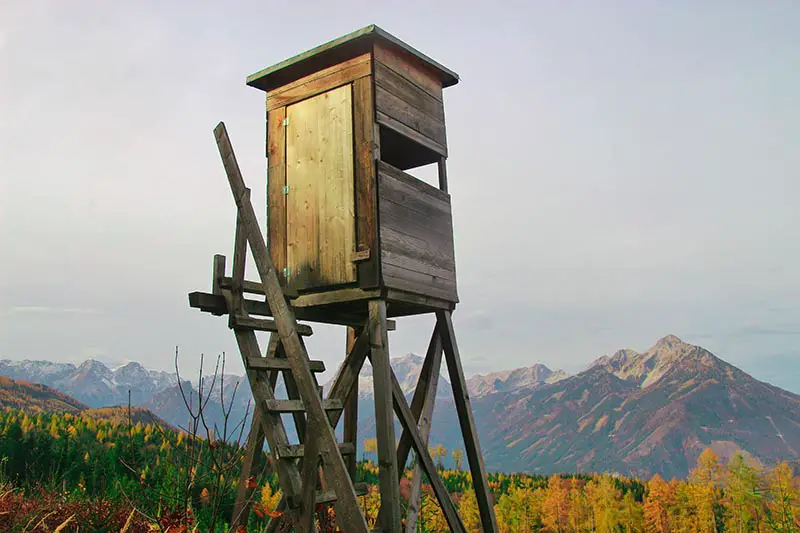
For the cabin, you’ll need to structure it like you would build walls for a house. This means a big frame and inside planks at the extremities of where your windows frames will be.
We also recommend designing the side frames with an angle to allow water to flow down. For this roof, you’ll need a bundle of shingles and four extra shingles for a 6×5 cabin.
For the door of your cabin, consolidate it with 2×4 to make a “>” shape with a horizontal plank in the middle. Don’t forget to put your angles on the side of the hinges to make it better. You’ll also need hinges, of course, a doorknob, and a key lock.
Inside The Cabin
Inside your cabin, you’re going to want to add a few commodities to make your long hunting sessions more comfortable. In front of your main window, you can build a counter to rest your weapon.
In the space above the windows, you can quickly build shelves that can be useful to store food, first-aid kits, and ammunition safely. Finally, a drink holder next to the window is an excellent idea, so you don’t need to look away too long.
Creating Simple Windows
Creating windows for your DIY hunting hide is simpler than you may imagine. All you need is to cut 2×4 planks to make a rectangle that will fit in the gaps you made for the cabin.
Assemble them except for the top one and cut a trench approximately half an inch deep to slide in some plexiglass. Then seal it with the top plank. For a clean frame, we recommend using a pocket hole jig to screw directly inside the wood; it will look better and make the window more resistant.
When fixing in the frames of your main cabin, you need hinges to attach it, a barrel latch to close and open it, and some magnets to hold it open while in use. We also recommend angling the bottom of the window frame to let the water flow down in case of rain. For insulation and durability, you can use silicone around the window and door frames.
Transporting And Installing The Deer Hide
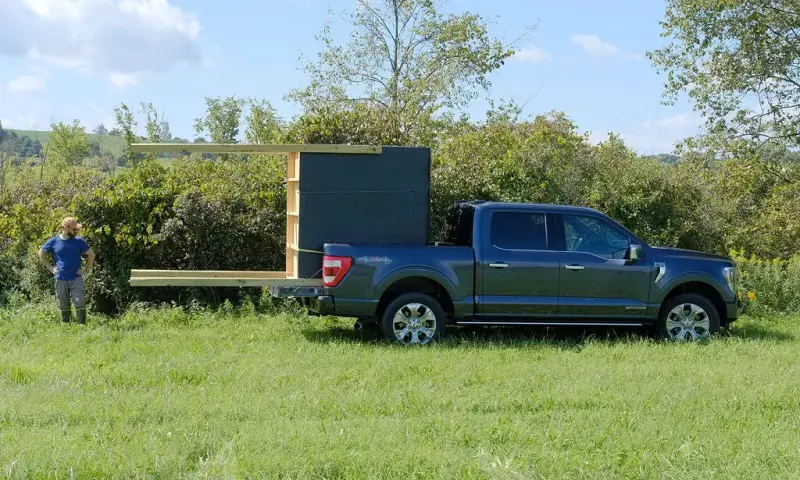
Once you have your basic structure, you’ll need to transport it to your hunting spot; for this, you’ll probably need a car hauler and some adjustable straps, and it wouldn’t hurt if you owned a pick-up truck. Once on the spot, you can assemble the cabin and link it to the elevated part.
We recommend doing it on the ground and pulling it up with a rope and friends. The hide should be placed directly next to a tree so you can anchor it with a strap and a few eye hooks. Then it’s time to consolidate the base with the fence poles and some clay.
Once your DIY deer hide is up, you can start painting it. For our 6×5 model, we calculated that you’d need two gallons of paint to get both the inside and the outside done. It’s essential to paint the inside because the deer will see you when the window is open. Of course, opt for colors adapted to the environment, and you can even have some fun making your own camo designs.
The final step is to build a way to access the elevated hide. You can use a ladder or go full DIY and build yourself some stairs. Opting for stairs or a ladder will depend on the terrain, but the flatter the surface, the better.
Conclusion: Ready To Hunt?
If you follow all these steps, you can build a great hunting blind that you can design the way you want. However, these are just the basics, and you go even further by adding cameras, screens, and other commodities inside to make your deer hunting even better.
Some people even design gun holders aligned with the window frame with a rotating mechanism to make aiming more manageable, so all you need is a little bit of creativity to create a unique deer hunting blind at a fraction of the cost.
References:


